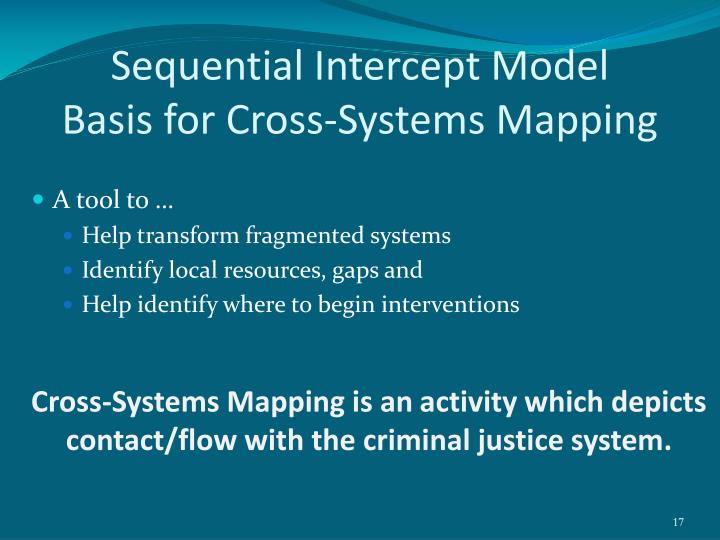


On average, in 2018, 30 percent of individuals incarcerated in the county jail system on any given day were in mental health housing units and/or prescribed psychotropic medications (5,111 of 17,024 individuals in the average daily inmate population for that year Los Angeles County Sheriff's Department, 2019). Los Angeles County is no exception to this trend. jails, usually as pretrial detainees ( Steadman et al., 2005). Conservative estimates suggest that 900,000 persons with serious mental illness are admitted annually to U.S. About 15 percent of men and 31 percent of women incarcerated in jails have a serious and persistent mental disorder ( Steadman et al., 2009). The largest mental health facilities in the United States are now county jails ( Torrey et al., 2010).
#Sequential intercept model bexar full size
Because of this, these findings will help the county determine the full size of the population that would be appropriate for diversion and how it would need to scale community-based treatment programs to accommodate those individuals. In conducting our review, we were not bound to existing diversion programs in Los Angeles County (or the current capacity of existing programs).Based on a consideration of these legal and clinical factors, an estimated 61 percent of the jail mental health population (about 3,368 individuals) were determined to be appropriate candidates for diversion 7 percent potentially appropriate (414 individuals) and 32 percent (1,762 individuals) not appropriate candidates for diversion.Researchers developed a set of structured legal and clinical criteria to reflect the factors that contribute to the Office of Diversion and Reentry's (ODR's) decisionmaking when determining whether an individual may be put forward as a candidate for diversion-that is, redirection of eligible individuals with serious mental illness from traditional criminal justice processing into community-based services.

In June 2019, 5,544 individuals were in the Los Angeles County jail mental health population, which includes individuals in mental health housing units and/or taking psychotropic medications.

This study will be of interest to state and county governments as well as other organizations serving criminal justice–involved populations with serious mental illness. The authors also provide recommendations for future programming and research. These findings will help the county determine how it would need to scale community-based treatment programs to accommodate these individuals. Researchers found that an estimated 61 percent of the jail mental health population were likely appropriate candidates for diversion 7 percent were potentially appropriate and 32 percent were likely not appropriate candidates for diversion. To better build and scale efforts to support this work, in 2018, the Los Angeles County's Board of Supervisors asked for a study of the existing county jail mental health population to identify those who would likely be eligible for diversion based on legal and clinical factors. Such redirection from the traditional criminal justice process is often characterized as diversion. Part of ODR's mission is to identify individuals currently incarcerated in a Los Angeles County jail who are experiencing a serious mental health disorder and, to the extent practical, provide them with appropriate community-based care with the goals of reducing recidivism and improving health outcomes. In 2015, the Office of Diversion and Reentry Division (ODR), an internal department of the Los Angeles County Department of Health Services, was created to redirect individuals with serious mental illness from the criminal justice system. This Article RAND Health Quarterly, 2021 9(2):7


 0 kommentar(er)
0 kommentar(er)
